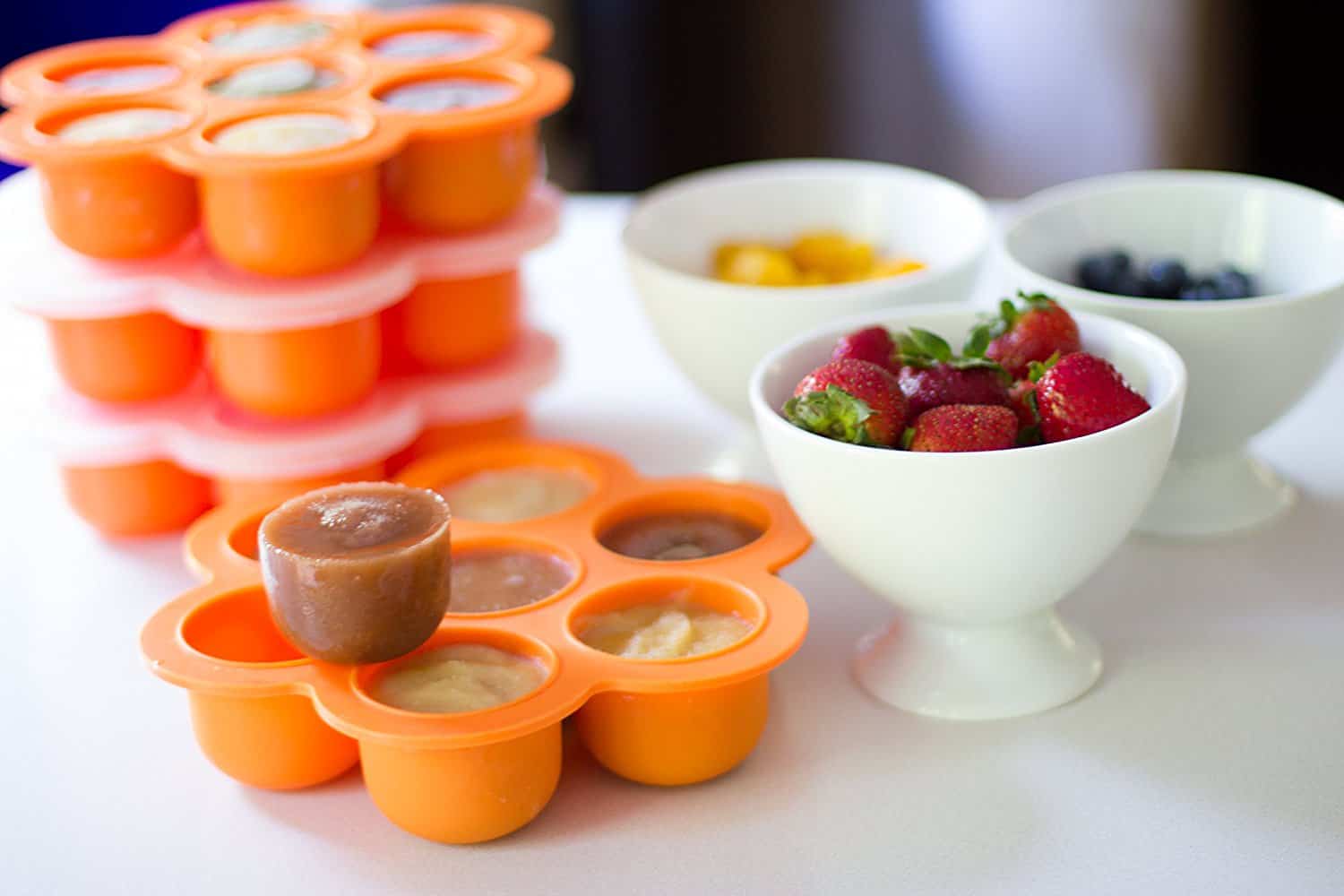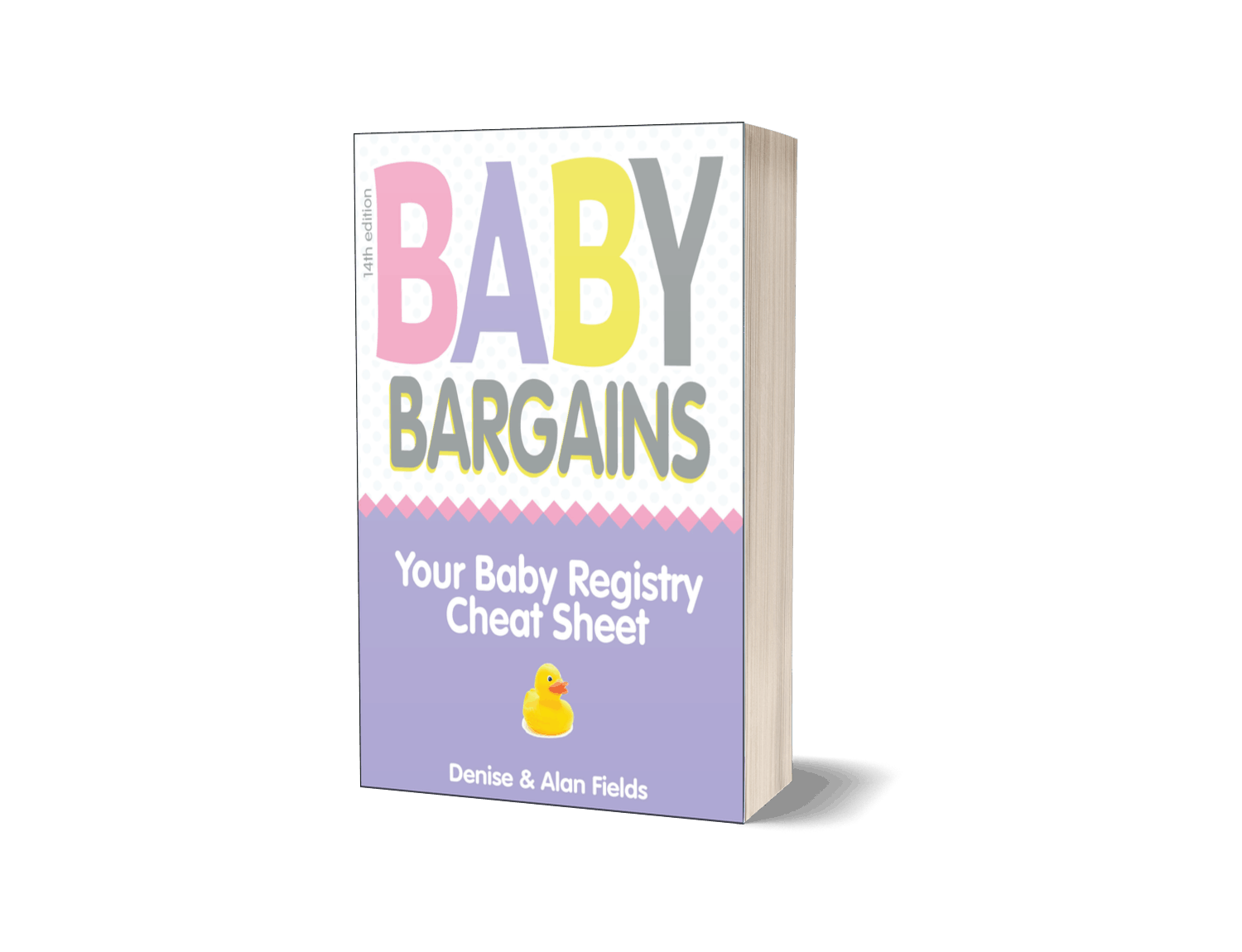
Last Updated: .
FYI: We are Baby Bargains, the #1 online resource for honest and independent baby gear reviews since 1994. We don't take money or freebies from the brands we review. Baby Bargains is 100% reader-supported. So we appreciate you considering our recommendations!
Best Plastic Containers
Check on Amazon
Best Plastic Containers: OXO Tot Baby Blocks Food Storage Containers
We tested several baby food storage solutions, taking them from refrigerator to microwave and back again. Which performed best? Are easiest to clean? The winner: OXO Tot’s Baby Blocks food storage containers. Here’s why:
What We Liked
• Watertight and leakproof. The plastic blocks can be refrigerated, frozen and heated.
• Easy to open and close. We liked the clear lids that let you see the contents.
• Clear measurement markings on side.
• PVC, BPA and phthalate free.
• Dishwasher and microwave safe.
• Durable. We think these storage food blocks have the best long term durability, based on feedback from our readers.
• Fit in popular bottle warmers like Avent and Kiinde.
What Needs Work
• Silicone seal can be hard to wash.
• Stacking could be better. These blocks fit nicely in the tray, but we wished they stacked better on their own.
Best Silicone Containers
Check on Amazon
Best Silicone Containers: KIDDO FEEDO Baby Food Storage Container
Yeah, it is a goofy name, but we thought Kiddo Feedo’s silicone baby food storage containers were the best option for silicone food storage. Why silicone? You can actually cook baby food in the silicone container (the maker says they can be heated up to 400 degrees). Food is easier to remove from silicone than it is from glass or plastic when frozen.
Silicone food containers can also be used after your baby is done with baby food—they are great for baking mini muffins and making mini popsicles.
What We Liked
• Food grade silicone that is free of BPA, BPS, PVC, phthalates, lead, latex, and nitrosamines.
• Easy to fill and remove.
• Easy to clean. These containers won’t stain or scratch like plastic or glass.
• Microwave and dishwasher safe.
What Needs Work
• Lid doesn’t completely seal or stay on. That means frozen baby food could be freezer-burned—it might be easiest to remove food cubes from the tray after frozen and put into freezer bags. That is a hassle, however!
• Smell. It didn’t bother us, but some folks who tested these trays said they didn’t like the smell of the silicone.
Best Glass Containers
Check on Amazon
Best Glass Containers: Glass Baby Food Storage Containers by WeeSprout
We know a good number of folks prefer glass to plastic when it comes to baby food containers. Whether that is because it is easier to recycle glass or the concerns over plastic use in general, we understand. After trying out several glass baby food storage options, we liked WeeSprout’s glass containers best. Here’s more:
What We Liked
• Easy to clean. Plastic storage options can be a pain to clean. These glass containers were a snap.
• Screw-on lids are easy to open and close.
• Microwave, freezer and dishwasher safe.
• Stack nicely in a refrigerator.
• Includes dry erase marker to write on lids.
• Can be warmed in a bottle warmer without the lid.
• Clear measurement markings on side of jars.
What Needs Work
• Glass can break! This is true for all glass baby food storage containers, of course. And these containers are durable—but any glass container can break.
• Leak proofing could be better. We found these containers occasionally leaked.
• Glass containers can be sterilized; plastic lids can not.
Best Budget-Friendly
Check on Amazon
Best Budget-Friendly: SamuelWorld Baby Food Storage Container
These silicone storage containers have the same pros and cons as our earlier silicone tray pick, except they are more affordable! These containers are freezer, microwave and oven safe (up to 425 degrees). No BPA, phthalates or PVC. The tray is bigger than the KIDDO FEEDO silicone trays recommended above—it has 12 compartments, compared to nine.
Why Trust Us
We’ve been rating and reviewing baby food storage options since 2011. In addition to hands on testing of freezer trays, storage containers and fillable pouches, we have surveyed our readers about reliability, ease of use and clean-ability.
Here’s another key point: we don’t take money from the brands we review. No free samples, no sponsors, no “partnerships.” Baby Bargains is your independent and unbiased source for expert baby gear reviews. We’ve been writing and reviewing baby gear since 1994. Yes, that long!
Hints on Making Your Own Baby Food
Making your own baby food is clearly on the rise. In fact, the New York Times reported last year that commercial baby food sales have declined 4% per year since 2005 (measured in volume consumed). Yes, some of that might be because of a decline in births, but the commercial manufacturers of baby food are plenty worried. They’re trying to improve sales with new flavors and “sexy” packaging (not our adjective, the Times said that).
Our home office pediatrician expert and co-author of Baby 411, Dr. Ari Brown, applauds parents who want to make their own food:
“It’s actually preferable to offer food from your table. That way, your baby will get used to your cooking! Yes, you can use seasonings, herbs and spices. Just limit the amount of salt and use iodized salt if you must add it. It’s not that hard. Trust me, I’d never make it on ‘Top Chef’ but even I could make baby food.”
If you decide to make some of your baby’s solid food, how do you store it so it doesn’t spoil? Surprisingly, there are more options for baby food storage than you might think.
First, you need something small. Two to four oz. portions are considered ideal for babies just starting out with solid food. Then you have to decide how to store it.
Do you want to freeze or refrigerate extra servings? Do you want to be able to microwave them to bring them up to room temperature? Do you prefer glass to plastic? How about single use or reusable storage? And finally, consider whether you’ll need to travel with baby food—some options are easier to take with you than others.
There are three basic choices for baby food storage:
- Freezer trays. We know, you’re asking, “why can’t we just use an ice cube tray?” Good question. You could, but you’ll have to remove the baby food blocks once they freeze and store them in a freezer bag to prevent freezer burn. Specialized baby food freezer trays, on the other hand, have a lid that helps avoid freezer burn. These are usually BPA-free silicone trays divided into single, 2 oz. serving with a plastic top. Freezer trays are just for freezing—you pop the serving out of the tray and warm it in a microwave safe bowl or defrost it in the fridge.
- Storage sets. No doubt you’ve been using plastic or glass storage containers with snap-on lids for years. Now they make special sets just for baby food. These containers often have measurements marked on the side of the container, leak-proof lids and stacking storage trays. Individual containers can be defrosted and heated in the microwave. The only issue: if you want to freeze a large batch of baby food, storage sets have a major limitation—you can’t remove portions from these sets once they are frozen to put in freezer bags and free them up for more batches.
- Feeding pouches. You may have seen commercial baby food in pouches at the grocery store. Now you can buy the pouches yourself and fill them with your own foods. You have two choices with pouches: single use (recyclable) or reusable. The pouches can be frozen (don’t overfill, though!) or refrigerated, but not microwaved. Instead, you’ll have to warm them in a hot water bath.

BabyBargains.com is a participant in the Amazon Services LLC Associates Program, an affiliate advertising program designed to provide a means for sites to earn advertising fees by advertising and linking to Amazon.com and its related sites. As an Amazon Associate, I earn from qualifying purchases.


 We obsess over gear for families and the home . . . so you don’t have to. Baby Bargains has one mission: help you find the best gear for your family with unbiased reviews by experts with 20 years of experience. At prices that don’t break the bank. When you purchase a product from links on this site, we make a small affiliate commission. Learn more
We obsess over gear for families and the home . . . so you don’t have to. Baby Bargains has one mission: help you find the best gear for your family with unbiased reviews by experts with 20 years of experience. At prices that don’t break the bank. When you purchase a product from links on this site, we make a small affiliate commission. Learn more 
